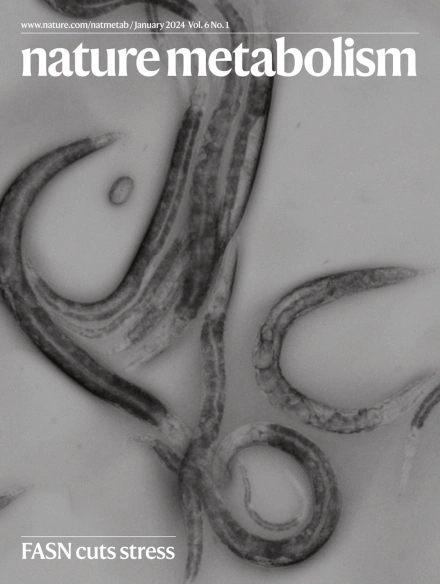无热量甜味剂对不同体重个体大脑食欲调节的影响
IF 18.9
1区 医学
Q1 ENDOCRINOLOGY & METABOLISM
引用次数: 0
摘要
三氯蔗糖是一种广泛使用的无热量甜味剂,它提供了无热量的甜味。一些研究表明,无热量甜味剂刺激食欲,可能是由于甜味的传递,而不需要通常与下丘脑沟通的摄取后代谢信号来抑制饥饿感。在一项随机交叉试验(ClinicalTrials.gov标识码:NCT02945475)中,75名年轻人(健康体重、超重或肥胖)饮用含有三氯蔗糖、甜度匹配的蔗糖或水的饮料。我们发现,与蔗糖相比,急性摄入三氯蔗糖会刺激下丘脑血流量(P < 0.018)和更大的饥饿反应(P < 0.001)。与水相比,三氯蔗糖也能增加下丘脑血流量(P < 0.019),但对饥饿感评分没有影响。蔗糖,而不是三氯蔗糖,会增加外周葡萄糖水平,这与下丘脑内侧血流量减少有关(P < 0.007)。与蔗糖和水相比,三氯蔗糖会增加下丘脑和大脑中涉及动机和体感处理的区域之间的功能联系。这些发现表明,无热量甜味剂可能会影响下丘脑负责食欲调节的关键机制。在一项针对不同体重的健康年轻人的随机交叉临床试验中,三氯蔗糖增加了下丘脑血流量及其与涉及动机和体感处理的大脑区域的功能联系。本文章由计算机程序翻译,如有差异,请以英文原文为准。

Non-caloric sweetener effects on brain appetite regulation in individuals across varying body weights
Sucralose, a widely used non-caloric sweetener, provides sweet taste without calories. Some studies suggest that non-caloric sweeteners stimulate appetite, possibly owing to the delivery of a sweet taste without the post-ingestive metabolic signals that normally communicate with the hypothalamus to suppress hunger. In a randomized crossover trial (ClinicalTrials.gov identifier: NCT02945475 ), 75 young adults (healthy weight, overweight or with obesity) consumed a drink containing sucralose, sweetness-matched sucrose or water. We show that acute consumption of sucralose versus sucrose stimulates hypothalamic blood flow (P < 0.018) and greater hunger responses (P < 0.001). Sucralose versus water also increases hypothalamic blood flow (P < 0.019) but produces no difference in hunger ratings. Sucrose, but not sucralose, increases peripheral glucose levels, which are associated with reductions in medial hypothalamic blood flow (P < 0.007). Sucralose, compared to sucrose and water, results in increased functional connections between the hypothalamus and brain regions involved in motivation and somatosensory processing. These findings suggest that non-caloric sweeteners could affect key mechanisms in the hypothalamus responsible for appetite regulation. In a randomized, crossover clinical trial in healthy young adults with varying weights, sucralose increased hypothalamic blood flow and its functional connections with brain regions involved in motivation and somatosensory processing.
求助全文
通过发布文献求助,成功后即可免费获取论文全文。
去求助
来源期刊

Nature metabolism
ENDOCRINOLOGY & METABOLISM-
CiteScore
27.50
自引率
2.40%
发文量
170
期刊介绍:
Nature Metabolism is a peer-reviewed scientific journal that covers a broad range of topics in metabolism research. It aims to advance the understanding of metabolic and homeostatic processes at a cellular and physiological level. The journal publishes research from various fields, including fundamental cell biology, basic biomedical and translational research, and integrative physiology. It focuses on how cellular metabolism affects cellular function, the physiology and homeostasis of organs and tissues, and the regulation of organismal energy homeostasis. It also investigates the molecular pathophysiology of metabolic diseases such as diabetes and obesity, as well as their treatment. Nature Metabolism follows the standards of other Nature-branded journals, with a dedicated team of professional editors, rigorous peer-review process, high standards of copy-editing and production, swift publication, and editorial independence. The journal has a high impact factor, has a certain influence in the international area, and is deeply concerned and cited by the majority of scholars.
 求助内容:
求助内容: 应助结果提醒方式:
应助结果提醒方式:


